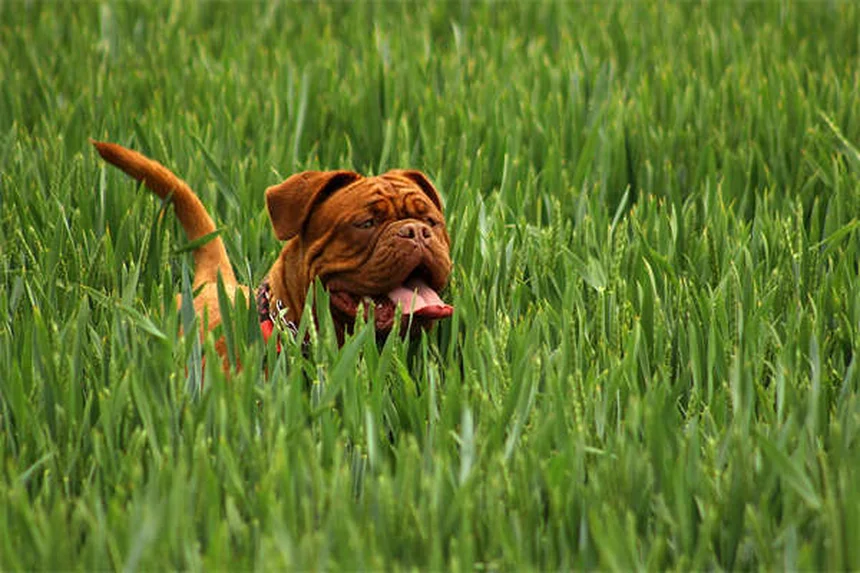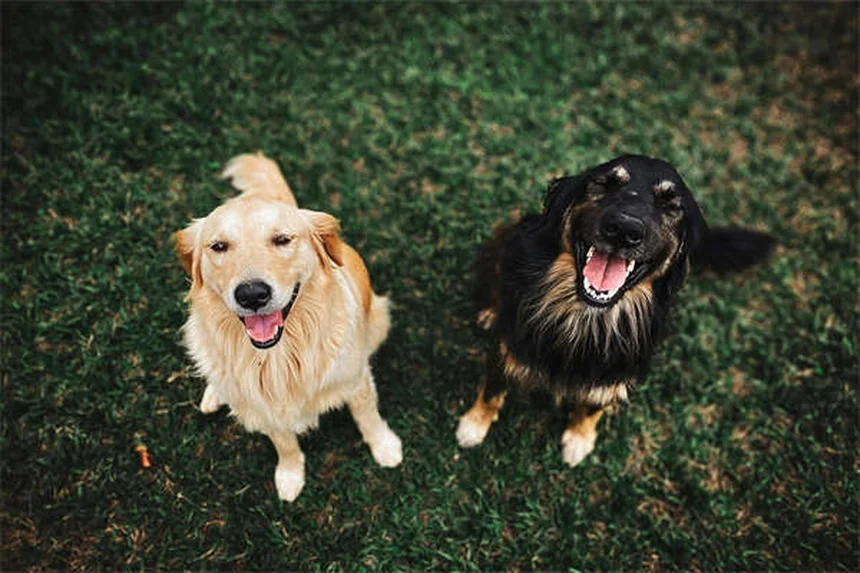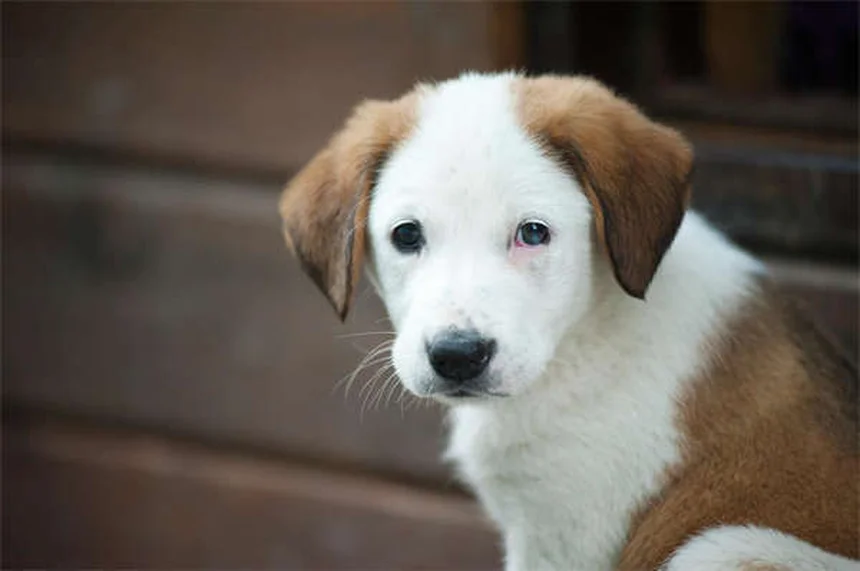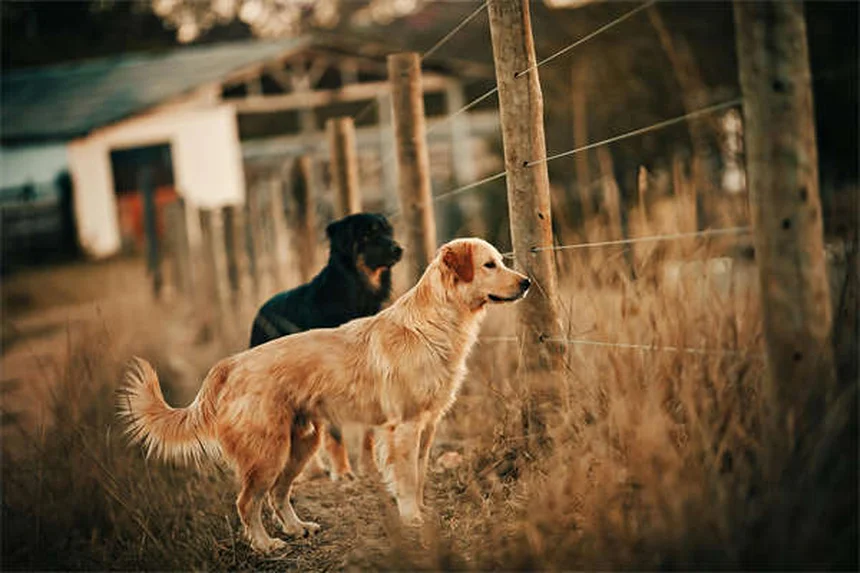Advertisement
Why do puppies cry? The answer is simple yet complex - puppies cry for the same fundamental reasons human babies do: they're communicating their needs! Whether it's hunger, loneliness, pain, or just wanting attention, those heartbreaking whimpers are your puppy's way of saying Hey, I need something here!As a new puppy parent myself, I remember panicking every time my golden retriever Max would whine. Was he hurt? Hungry? Just being dramatic? After years of experience and consulting with top veterinarians, I've learned that understanding puppy cries comes down to recognizing these 5 key triggers: separation anxiety, physical discomfort, illness, frustration, and plain old attention-seeking.The good news? You can quickly learn to decode your puppy's unique language. In this guide, we'll break down exactly what different cries mean and give you practical, vet-approved solutions to comfort your furry friend. Because let's face it - when that little face looks up at you with those sad eyes, you'll want to know exactly how to help!
E.g. :5 Common Kitten Behavior Problems & How to Fix Them Fast
- 1、Understanding Your Puppy's Cries
- 2、Common Reasons Puppies Cry
- 3、Crate Training Without the Waterworks
- 4、Beyond Basic Needs: Advanced Puppy Communication
- 5、Emergency Situations: When to Worry
- 6、The Science Behind Puppy Vocalizations
- 7、Training Techniques That Actually Work
- 8、Environmental Factors You Might Be Missing
- 9、Nutrition's Role in Puppy Behavior
- 10、Bonding Through Understanding
- 11、FAQs
Understanding Your Puppy's Cries
The Language of Puppy Whines
You know that heart-melting sound when your puppy whimpers? That's their way of talking to you! Just like human babies, puppies use different cries to express different needs. While adult dogs might whine to say "hello" or "let's play," puppies typically cry when they're distressed or need something.
Think about it this way - when you first brought your puppy home, they suddenly found themselves in a strange new world without their mom and siblings. Wouldn't you cry too? Their whines are survival instincts kicking in, just like when they needed their mother's attention in the wild. As they grow, these vocalizations become more sophisticated, but in those first few weeks, every cry is basically saying, "Help! I need something!"
Developmental Milestones and Communication
Let's break down how puppies learn to communicate:
| Age | Development Stage | Typical Vocalizations |
|---|---|---|
| 0-2 weeks | Neonatal period | Constant crying for basic needs |
| 2-4 weeks | Transition period | Less frequent but more varied cries |
| 4-12 weeks | Socialization period | Playful barks, whines, and experimental sounds |
During the first two weeks, your puppy is basically a tiny, helpless potato with eyes closed tight. They'll cry constantly because that's their only way to say, "I'm hungry," "I'm cold," or "Where's mom?" As they grow, you'll notice their cries become more specific - maybe a high-pitched whine when they need to potty or a persistent bark when they want to play.
Common Reasons Puppies Cry
 Photos provided by pixabay
Photos provided by pixabay
"I'm Scared and Lonely!"
Ever left your puppy alone for just five minutes and returned to a symphony of whines? Separation anxiety is real for puppies. They've spent their whole lives snuggled with warm bodies, and suddenly they're expected to sleep alone in a crate. That's like asking you to sleep in a dark forest on your first night away from home!
Here's what helps:- Place their crate near your bed at night- Give them a warm water bottle wrapped in a towel (simulates mom's warmth)- Try a heartbeat toy (yes, they really make those!)- Use dog-appeasing pheromones (nature's chill pill)
"Something Hurts!"
Did you know puppies can cry from pain you might not even notice? Maybe you accidentally stepped on their paw (we've all been there), or maybe they're teething. Pain cries are usually sharper and more sudden than other whines. Watch for other signs like limping, avoiding certain movements, or changes in eating habits.
Pro tip: Keep your vet's number handy. When my puppy Max cried after his first shots, I panicked and called the vet at 3 AM. Turns out it was completely normal, but better safe than sorry when it comes to your fur baby's health!
Crate Training Without the Waterworks
Making the Crate a Happy Place
Why do puppies hate crates at first? Imagine being shoved into a small space with no explanation - not exactly welcoming, right? The key is positive associations. Start by feeding meals in the crate with the door open. Then try short periods with the door closed while you're still in the room.
Here's a game-changer: puzzle toys stuffed with treats! They keep your pup busy while you gradually increase distance. First day, sit right next to the crate. Next day, move a foot away. Before you know it, you'll be able to leave the room without a meltdown.
 Photos provided by pixabay
Photos provided by pixabay
"I'm Scared and Lonely!"
This is the million-dollar question: When should I comfort my crying puppy? The answer isn't black and white. If they're scared after a loud noise or vet visit, absolutely comfort them! But if they're whining because you took away your favorite shoe (again), try redirecting to an appropriate toy instead.
Remember that hilarious viral video of the puppy crying over a stolen sock? That's exactly when distraction works best. Make a funny noise, toss a treat, or bring out their favorite squeaky toy. Positive reinforcement beats punishment every time when training your furry friend.
Beyond Basic Needs: Advanced Puppy Communication
Socialization Superpowers
Did you know the period between 4-12 weeks is like puppy college for social skills? This is when they learn doggy manners and human interactions. Positive experiences now mean a well-adjusted adult dog later. Sign up for puppy classes (after vaccinations), introduce them to friendly adult dogs, and expose them to different sounds and surfaces.
Fun fact: Puppies who experience car rides, elevators, and various floor textures during this period tend to be more confident adults. My neighbor's dog still freaks out at hardwood floors because he never encountered them as a pup - don't let that be your dog!
Reading Between the Whines
Here's a quick cheat sheet for decoding puppy cries:- Short, high-pitched whines: "I need to potty!"- Long, drawn-out howls: "I'm lonely!"- Sudden yelps: "Ouch! That hurt!"- Playful barks with wagging tail: "Let's have fun!"
Pro tip: Keep a puppy journal at first. Note what happened before each crying episode, how long it lasted, and what helped. You'll start seeing patterns that make training way easier. Plus, it's adorable to look back on later!
Emergency Situations: When to Worry
 Photos provided by pixabay
Photos provided by pixabay
"I'm Scared and Lonely!"
Most puppy crying is normal, but how do you know when it's serious? Watch for these danger signs:- Crying combined with vomiting or diarrhea- Whining when touched in a specific area- Continuous crying for more than an hour- Loss of appetite along with vocalizations
When in doubt, call your vet. I'll never forget when my puppy cried nonstop one night - turns out he'd swallowed part of a toy. The emergency vet visit wasn't cheap, but catching it early saved his life. Always trust your gut when it comes to your puppy's health.
Building a Lifetime of Trust
Every time you respond appropriately to your puppy's cries, you're building trust. They learn that you'll take care of their needs, which makes them feel secure. This foundation lasts their whole life. That anxious puppy who cried all night? With patience and consistency, they'll become the confident dog who happily goes to their crate on command.
Remember, puppyhood flies by faster than they can chew up your favorite shoes. Enjoy these early days, even the noisy ones. Before you know it, you'll miss those tiny whimpers - though probably not the 3 AM potty breaks!
The Science Behind Puppy Vocalizations
How Puppy Brains Process Communication
Ever wonder why puppies seem to understand your tone before they know words? Their brains are wired for emotional connection first. Studies show puppies respond to human vocal tones similarly to how human babies do - they recognize happy, sad, and angry tones long before understanding specific words.
Here's something fascinating - when researchers played recordings of human speech to puppies, the pups' brain activity spiked in regions associated with emotional processing. This means your puppy isn't just hearing your words - they're feeling your emotions too. That's why speaking calmly during training works better than yelling when they make mistakes.
The Surprising Similarities to Human Infants
Did you know puppies and human babies share similar vocal development patterns? Check out these parallels:
| Development Stage | Puppies | Human Babies |
|---|---|---|
| 0-3 months | Basic distress cries | Hunger/fussiness cries |
| 3-6 months | Play vocalizations emerge | Babbling begins |
| 6-12 months | Complex barks/whines | First words appear |
Isn't it wild how nature creates similar blueprints across species? This explains why so many parenting techniques work for puppies too - like responding consistently to cries and providing plenty of positive reinforcement.
Training Techniques That Actually Work
The Power of Positive Reinforcement
Why do some training methods fail while others work like magic? The secret lies in timing and consistency. When your puppy whines for attention and you immediately pick them up, you're actually training them to cry more. Instead, try waiting for a moment of quiet before giving affection.
Here's a pro tip that changed everything for me: Keep treats in your pocket at all times during training. When your puppy stops crying on their own - even for just two seconds - immediately say "good quiet!" and reward. This teaches them silence gets rewards faster than noise. Within days, you'll notice longer quiet periods.
Should You Use Clicker Training?
You've probably heard about clicker training, but does it really work for crying puppies? The answer might surprise you. While clickers are fantastic for teaching tricks, they're not always the best tool for addressing excessive whining. Here's why - the sharp click sound can actually startle sensitive puppies and make anxiety worse.
Instead, try using verbal markers like "yes!" in a happy tone. It's gentler and builds more positive associations. Remember my friend's golden retriever who would cry at the clicker sound? We switched to verbal markers and saw improvement within a week!
Environmental Factors You Might Be Missing
The Temperature Factor
Did you know room temperature significantly impacts puppy comfort? Puppies can't regulate body temperature like adult dogs. If your AC is blasting or the room feels chilly to you, it's probably freezing for your tiny furball. Try placing a thermometer near their sleeping area - ideal puppy temperature is between 75-80°F.
Here's a simple test: Feel your puppy's ears. If they're cold to the touch, consider adding a microwavable heat pad (wrapped securely in blankets) to their bed. Just be sure to monitor them closely to prevent overheating. My neighbor learned this the hard way when her shivering puppy wouldn't stop crying - turns out the tile floor was too cold!
Lighting and Sound Considerations
Ever notice how puppies cry more at night? Darkness amplifies their anxiety. Try using a nightlight near their crate - not too bright, just enough to create a soft glow. And here's a game-changer: white noise machines work wonders for puppies! The consistent sound masks startling noises from outside.
When my puppy was driving me crazy with midnight whimpers, I tried playing rainforest sounds at low volume. The difference was incredible - she slept through garbage trucks, thunderstorms, even my late-night snack runs to the kitchen. Who knew nature sounds were puppy Xanax?
Nutrition's Role in Puppy Behavior
Hunger vs. Comfort Eating
Why does your puppy sometimes cry right after eating? They might be experiencing "false hunger" from low-quality food. Cheap kibble often lacks proper nutrients, leaving puppies unsatisfied despite full bellies. Look for foods with high protein content (at least 25%) and limited fillers like corn or wheat.
Here's a simple test: If your puppy's food looks like brown cereal and smells like cardboard, it's probably not meeting their needs. When I switched my pup to a better quality food, the post-meal whining stopped completely. Bonus - her coat got shinier too!
Hydration Matters More Than You Think
Could dehydration be causing your puppy's distress? Puppies need constant access to fresh water, especially during growth spurts. But here's the catch - some puppies cry because they've drunk too much water too fast and need to potty immediately.
The solution? Create a hydration schedule. Offer water at regular intervals (every 2 hours) rather than leaving a bowl out constantly. This prevents over-drinking while ensuring proper hydration. My vet taught me this trick after my puppy would gulp water then cry to go out every 15 minutes!
Bonding Through Understanding
The Magic of Mirroring
Want to instantly connect with your puppy? Try mirroring their energy. When they're calm and quiet, match that energy with soft pets and whispers. When they're playful, engage with equal enthusiasm. This builds trust faster than any training technique.
I'll never forget how mirroring helped my shy rescue puppy. At first, she'd cry whenever I approached too quickly. But when I started moving at her pace - slow blinks, gentle movements - she stopped crying and began seeking me out. Now she's the most confident dog at the park!
Creating Your Unique Communication System
Did you know you can develop your own "language" with your puppy? Start by consistently using specific words for needs. For example, always say "potty time" before bathroom breaks and "all done" when playtime ends. Consistency creates predictability that reduces anxiety.
Here's a fun experiment: Try inventing a silly word just for cuddle time. My puppy learned that "snugglebugs" means lap time - now she comes running when she hears it! These little rituals make your bond stronger while giving your puppy clear ways to communicate without whining.
E.g. :Why Is My Puppy Crying and Whining and How Can I Help Them ...
FAQs
Q: Is it normal for puppies to cry all night?
A: Yes, it's completely normal for puppies to cry at night, especially during their first week in a new home. Imagine being taken from your warm, cuddly family and placed alone in a strange crate - you'd cry too! The key is making their sleeping area feel safe. Try placing their crate near your bed, using a heartbeat toy (they mimic mom's pulse), or wrapping a warm water bottle in a towel. Most puppies adjust within 3-5 nights if you're consistent. My puppy Max cried for exactly 4 nights before realizing his crate was actually a cozy den!
Q: Should I pick up my puppy every time they cry?
A: While your instinct is to comfort your crying puppy (we've all been there!), constantly picking them up can actually reinforce crying behavior. Instead, assess the situation. If they're scared after a loud noise or vet visit, absolutely comfort them! But if they're whining for attention while you're eating dinner, try redirecting with a toy or treat. The golden rule? Meet their needs without creating bad habits. I learned this the hard way when my puppy started crying just to be carried around - talk about a workout!
Q: How can I tell if my puppy's crying means they're sick?
A: Sick puppy cries often sound different - they might be weaker, more persistent, or accompanied by other symptoms. Watch for vomiting, diarrhea, loss of appetite, or discharge from eyes/nose. Pain cries are usually sharp and sudden (like if you accidentally step on their paw). When my puppy had an upset stomach, his cries were more moan-like between naps. If crying lasts over an hour or seems "off," always call your vet. Better safe than sorry with these little ones!
Q: Why does my puppy cry when playing with toys?
A: Those dramatic playtime cries usually mean one of two things: either the toy rolled under the couch (frustration crying) or they're actually having the time of their life! Puppies often make crazy noises during play - it's like kids screaming on a playground. The key is watching their body language. If their tail is wagging and they keep engaging with the toy, it's happy noise. But if they're crying while trying to reach something, help them out to prevent frustration. My puppy once cried over a stuck tennis ball for 20 minutes before I realized - talk about persistence!
Q: How long does the crying phase last in puppies?
A: Most puppies gradually cry less as they mature, typically between 4-6 months old. But here's the interesting part - how you respond to early cries shapes their future behavior. Puppies who learn other ways to communicate (like sitting quietly for attention) tend to vocalize less as adults. The socialization period (8-12 weeks) is crucial for teaching calm behavior. My best advice? Be patient, consistent with training, and remember - this phase passes faster than you think. Soon you'll miss those tiny whimpers (but maybe not the 3 AM potty breaks)!







